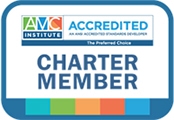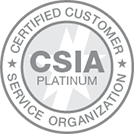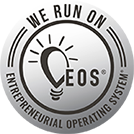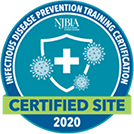A key aspect of any successful meeting or event is sponsorship. The dichotomy of the information age is that while people are readily accessible, it has gotten increasingly hard to make contact. So how can Association Management companies break the barriers that exist, in order to gain the sponsorships that make their events sustainable? This article will attempt to examine those barriers, and provide key tools for helping your association achieve their sponsorship goals.
Focus – What is your goal? It seems like an easy question, but for many organizations defining their sponsorship goal can be overwhelming. Increasing funds should always be a reoccurring theme each year – but sometimes it’s not always about dollars and cents. A successful campaign should strike a balance between retaining past sponsors and gaining new ones in order to propel the organization forward. It should also focus on attracting the right partnerships that will help facilitate increased membership and conference attendance. A well-executed event can be the driving force for both.
When seeking sponsorship, knowing who to target and how to reach them is always an uphill climb. Using your association’s client history is a good place to start. Determine who renews their sponsorship commitments each year, and the correct points-of-contact for those organizations. It is imperative to build strong and lasting relationships with these companies. One way to do so is by maintaining contact throughout the year, and not just when you are seeking sponsorship. Open communication not only helps solidify the relationship, but ensures you are kept abreast of any employee turnover within the organization so you can update your records accordingly. Nothing is worse than a lost connection to a charitable organization.
There are a number of ways to seek out new sponsorship. The ultimate goal is to identify companies whose ideals and policies align closely with your organization. There is no better source of such leads than your association’s database. Actively reaching out to membership to help drive sponsorship is essential. One way to spur a call to action is to send periodic emails blasts conveying your sponsorship goals. Be sure to effectively communicate not only the purpose of sponsorship, but what your potential sponsors will receive in return for their investment. Providing incentives such as discounted registration or attractive promotional opportunities will increase your chances for success.
Timing is everything. Sometimes landing a sponsor is a stroke of good luck, and sometimes it's the result of smart timing. Although your association may be on a calendar year, your sponsoring organization may be on a fiscal year; the two may not necessarily coincide. By strategically setting reminders to reach out in the fourth quarter, you can increase the odds that your sponsorship request will be factored into your potential sponsor's budget.
While an association's membership may the best source of leads, thinking outside the box can pay dividends. In order to seek out new sponsorship, you must first identify your target audience. Some companies spend thousands of dollars on mailing lists in order to assist them in the process; but without significant results there is little return of your investment. Keyword research is a marketing tactic that can yield positive results, without the high price tag. For instance, if your association is mostly comprised of individuals in the medical field, some keywords might include: pharmaceutical, medical school, healthcare, medical research, etc. Searching these keywords online provides a starting point for likely partnerships. While most companies provide contact information right on their website, others will require a bit more investigation. If the proper point-of-contact is not obvious, the best thing to do is ask. When calling, seek out a contact within the Marketing Department, or openly state the reason for your call and let someone direct you to the correct person within the organization.
Another method is utilizing email. When making first contact, it is always better to avoid using programs such as Constant Contact, which can come off impersonal. Instead, tailor an email to the potential sponsor. Be sure to clearly state what organization you are with and the reason for contact. Avoid using too many images, links or attachments, as they are flags for spam filters. An email is wasted if it never makes it into a potential sponsor’s inbox.
Having a detailed prospectus available is a powerful tool. It should not only include an overview of the meeting or conference, but also an explanation of the various sponsorship levels and what the potential sponsor will receive for their investment. Providing demographics about attendance and a list of past sponsors allows a company to analyze whether there is potential to reach their target audience.
Follow up is crucial. As the old sales adage goes, “You should always be closing.” Don’t be afraid to pound the phone and ask for the sale. Be sure to properly acknowledge your sponsors and send post-event, personalized thank you letters. Sponsorship is an extremely effective way for a company to leverage a partnership. Meetings and conferences are the ultimate networking opportunity. At the end of the day, associations need sponsorship and sponsors need sales; it is a mutually beneficial relationship. It is the job of the association management company to provide the platform of opportunity.
Christina DeRose is the Standards and Specifications Marketing Manager for the National Air Duct Cleaners Association (NADCA), an AH client partner.




